Peony Growth and development process, if properly managed can live for decades or even centuries. If the growing condition is poor, the tree peony is often damaged by diseases and insect pests and the influence of bad environment, resulting in many spots and incomplete leaves, weak growth of branches, dry root system, rot or development deformity, thus greatly reducing the ornamental value,
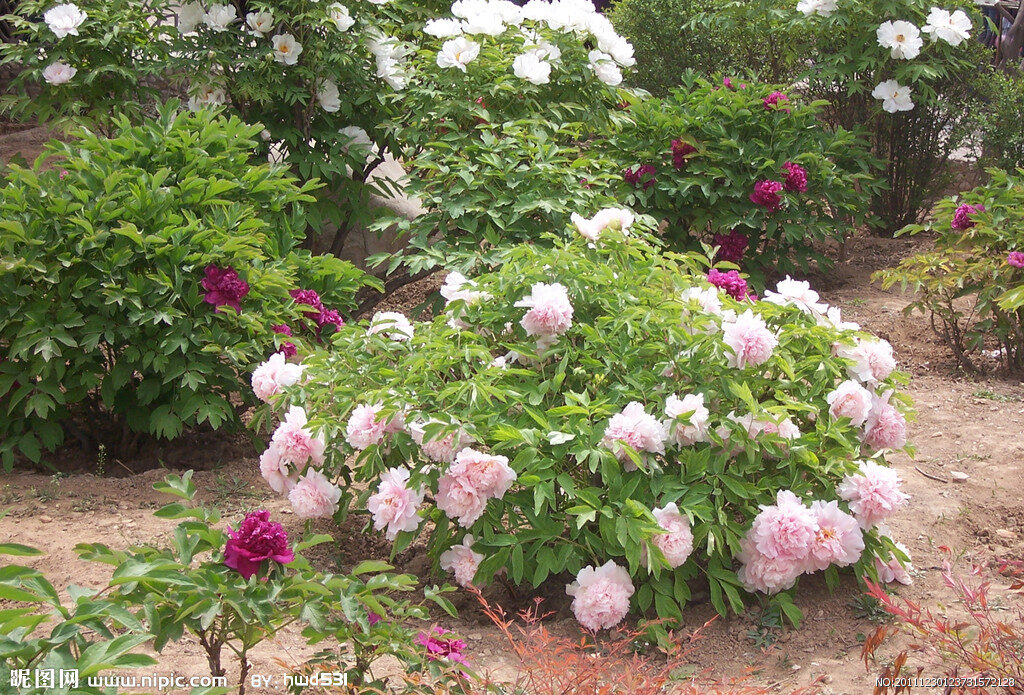
1.gray mold
Botrytis CINEREA is one of the most important diseases in the world. The disease can occur in the growing season of tree peony.
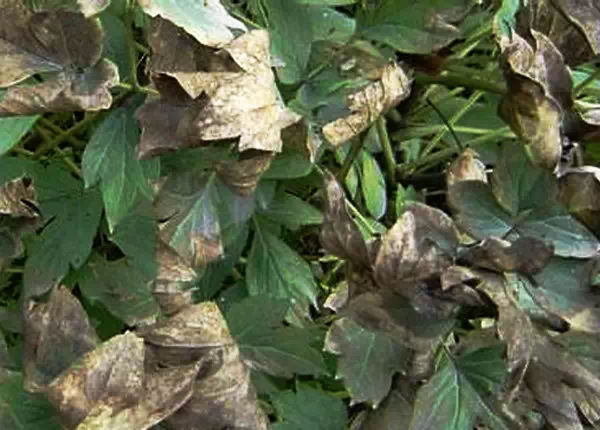
Symptoms
The disease endangers the stems, leaves and flowers of peony. When the stem appears Brown spots, rot, seedling withering and lodging. Infected leaves produce irregular water spots, leaf tip and leaf edge spots more, brown spots, but also purple-brown, sometimes with irregular ring pattern, wet weather department gray mold. Petiole and leaf stem disease spot for more long, dark brown, a little depression, disease department easy to break. Infected Flower Buds Brown, dry, Brown petals, rot. Under moist conditions, gray mould layer can be formed at the site of the disease. The disease is a fungal disease.
Low temperature and humidity are the main conditions of the disease. In spring, the temperature is lower and the continuous rain will aggravate the disease of the seedlings. The disease often occurs after the flowering period of the host, 6 ~ 7 months, more nitrogen fertilizer, is conducive to the disease.
Control method
1. Combined with yard cleaning, timely removal of diseased leaves and plants, and focus on burning.
2. In case of disease during growing season, the following medicament can be used for spray control: 1% lime equivalent bordeaux solution, 70% thiophanate-methyl 1000 times solution, 65% ZNZN 500 times solution, or 50% chloronitramine 1000 times solution. Spray every 10 to 15 days, 2 to 3 times in a row.
3. The density of planting should be moderate, the plant should be drained in time after rain, the plant should not be moistened from the base, the rotation should be carried out in the serious disease area, and the seedling should be planted without disease, the seedling can be disinfected by soaking for 1015 minutes in 65% ZINCON 300 times solution.
2.Brown spot disease
Brown spot disease, also known as the red spot disease, the disease is widespread, serious harm, disease rate of leaves can reach 89.3% , often cause early blight, affect the growth of peony.
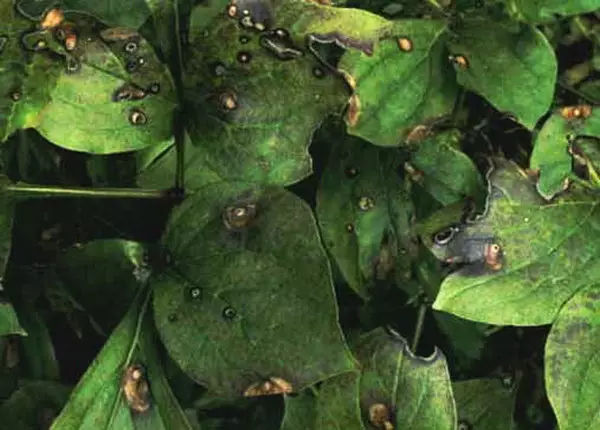
Symptoms
Brown leaf spot mainly damages the leaves of Tree Peony, but also infects branches, flower organs, seed and other parts. In the early stage of the disease, there were large round or irregular spots on the leaves, which were Brown on both sides. When the disease was serious, the spots converged and caused the leaves to be withered and twisted, and dark green mould layer appeared on the back of the spots under moist conditions The spot on the flower organ is Brown spot, and the edge of the petal is scorched when the disease is serious. The spot on the flower organ is Brown spot, and the edge of the petal is scorched when the disease is serious. The disease is caused by fungi.
The disease is more serious in warm and rainy conditions, more pathogens, more nitrogen fertilizer, higher planting density and poor ventilation and light transmission. The high temperature rainy season is the peak period of disease.
Control method
1. To reduce the source of infection, Autumn thoroughly remove the debris on the ground, spray 50% CARBENDAZIM 600 times liquid or 3 baume degree sulfur mixture before germination of plants in early spring to kill the bacteria.
2. Starting from early May, 50% MANCOZEB 500-fold solution or 75% CHLOROTHALONIL 800-fold solution was sprayed once every 15 days for 3 ~ 4 Consecutive Times.
3. Planting density is moderate, apply organic fertilizer and compound fertilizer.
4. Clean the field in winter, then spray the stem with 7 ~ 10 times lime-sulfur mixture.
3.Anthrax
ANTHRACNOSE is a common disease of tree peony in China. The United States, Japan and other countries have also reported. Anthracnose often makes peony leaf withered spots, twisted stems, young shoots dead.
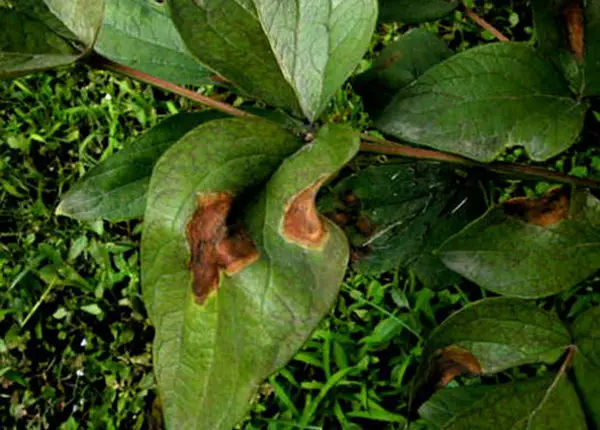
Symptoms
Anthracnose of Tree Peony damages leaves, stems, flower organs and other parts of Tree Peony. In late April, round purple-brown spots appeared on the leaf surface, petiole and stem, and gradually expanded to nearly round spots. The size of the spots varied from 4 mm to 25 mm in diameter, and the spots on the leaf margin were semi-elliptic The expansion of the lesion was semi-elliptic due to the influence of the main vein.
The black spot reveals color, the middle part of the late period is gray-white, the spot edge is red-brown. There are many black spots on the spots. In the humid condition, there are red-brown sticky clusters on the spots. This is the characteristic of anthracnose. The lesions dehiscence and perforation in the late stage. On stem and Petiole of disease spot is lozenge mostly, a bit sunken, long 3 ~ 6 millimeter, red-brown; later period is gray-brown, edge is red-brown. The diseased stems are twisted and break when they are seriously ill. The young stems become diseased and die off quickly. Bud Scales and petal damage can cause flower bud death and Corolla deformity. The disease is a fungal disease.
The onset of the disease usually begins in late April, and the peak period is from August to September. High temperature, more rain, more dew, plant cluster closed easily induced diseases.
Control method
1. Cut off the victim and burn it.
2. At the initial stage of the disease (may-june) , 70% of furosemide 500 times, or 1% of lime equivalent bordeaux solution, or 65% of thymosin 500 times, 10-15 days, a total of 2-3 times.
3. Keep the plants well ventilated to avoid high temperature and humidity.
4.Purple Feather Disease
It belongs to fungus disease. Mainly from the soil and spread with the root when planting separately.
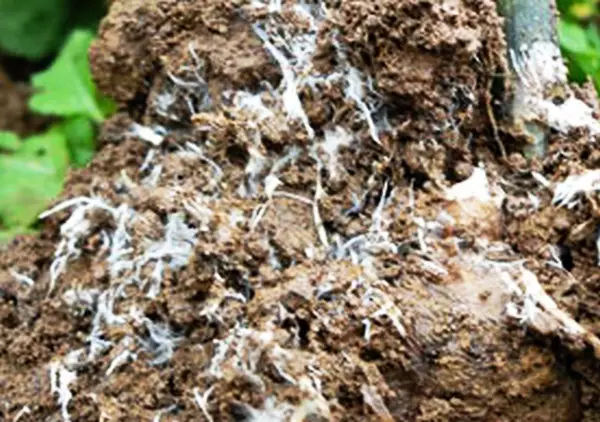
Symptoms
The disease occurs at the base of the trunk near the ground and at the root. The young roots or the neck of the roots are covered with purple or white cotton-like Hyphae, which appear yellow-brown at first and black later. After the disease, peony old roots rot, new roots do not grow, thin branches, germination late, leaves become small, from the bottom up withered and yellow wither, branches in death.
The disease can occur at any time, not limited to plum festival, but the early summer rainy season more common. Raw Land, low-lying wet land or improper fertilization (the use of raw fertilizer, heavy fertilizer) , the most susceptible to disease.
Prevention and Control Methods
1. Select high dry terrain, good drainage of loose soil, fertilizer to fully mature, avoid direct contact with the fertilizer roots.
2. Separately, can use 0.1% of copper sulfate solution immersion root 3 hours, or half an hour with lime water immersion, and then rinse with clear water replant.
3. If the disease is found, the rotten parts should be removed immediately or scraped off with a knife, and then disinfected with 4-5 Baume’s lime-sulphur mixture or sulphur.
4. At the beginning of the disease, 50% ZINCON 1000 times solution can be used to irrigate the roots, 500 ~ 1000 ML per plant
5. Rotation is carried out every three to four years.
5. Rust
Rust fungus is a host, the intermediate host is Paeonia Lactiflora, anemones, strychnine, pine and so on, so the peony nurseries near the plant can not be planted.
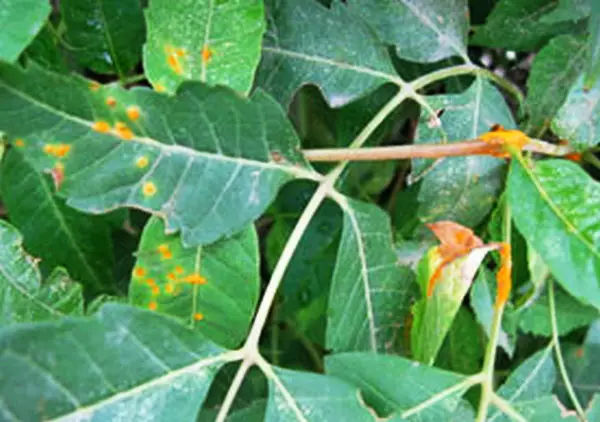
Symptoms
The leaves are fading Green, and the leaves are backed by piles of yellow boulders. In the late growth period, columnar hairs grow on the diseased leaves.
Control method
1. Remove and destroy the infected plant.
2. Planting should be high and open, with good drainage.
3. Before the onset of the same amount of Bordeaux liquid 160 times dilution, or spread 400 times of Zineb.
4. After the onset of stone sulfur mixture, dixie sodium, Triadimefon and other prevention and treatment.
6.White Silk Disease
SCLEROTIUM ROLFSII mainly occurred in the stem base near the ground. After the disease, the CORTEX of the stem base and root rotted, the water and nutrient transportation of the plant was cut off, the leaves became yellow and withered, and the whole plant died.
Symptoms
White Hyphae were formed on the surface of the root neck at the initial stage of the disease, and were covered with Silk Hyphae when the disease was serious.
Control method
1. First, root neck lesions were thoroughly scraped off with a knife, and the wound was disinfected with 1% copper sulfate solution. At the same time, the soil around the infected plant was opened up, and 70% pentachloronitrobenzene was mixed with the new soil in a ratio of 1:100, and evenly scattered in the soil around the diseased root.
2. The soil around the roots was irrigated with 50% ZNZN 400-fold solution.
7.Stem Rot
In the stem near the ground waterlogged spots occur, gradually expand rot, appear white woolly. Small initial markings on leaves, gradually enlarging to large gray-white and Hazel Markings, white spongy in wet weather. When the bud is injured, there are dark brown spots, and then rot.
Control method
1. Extirpate the diseased plants and disinfect the soil.
2. Healthy disease-free plants should not be planted in diseased areas.
3. Equal Dose Bordeaux Mixture.
8.Root Rot
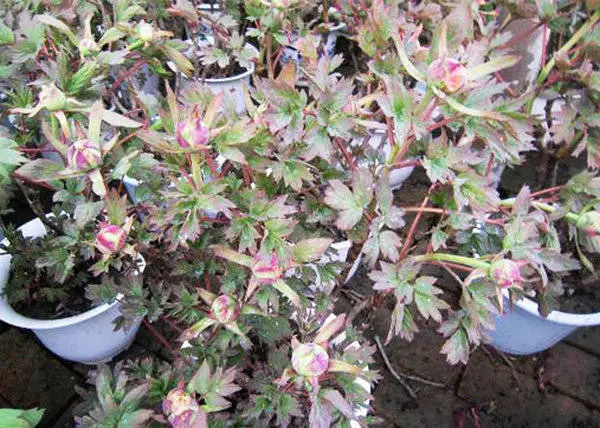
Damage the root, so that the root black rot, serious when the whole plant death.
The method of prevention and control is to dig out the diseased plants and burn them, and spread some sulfur powder or lime in the planting holes to disinfect the soil
